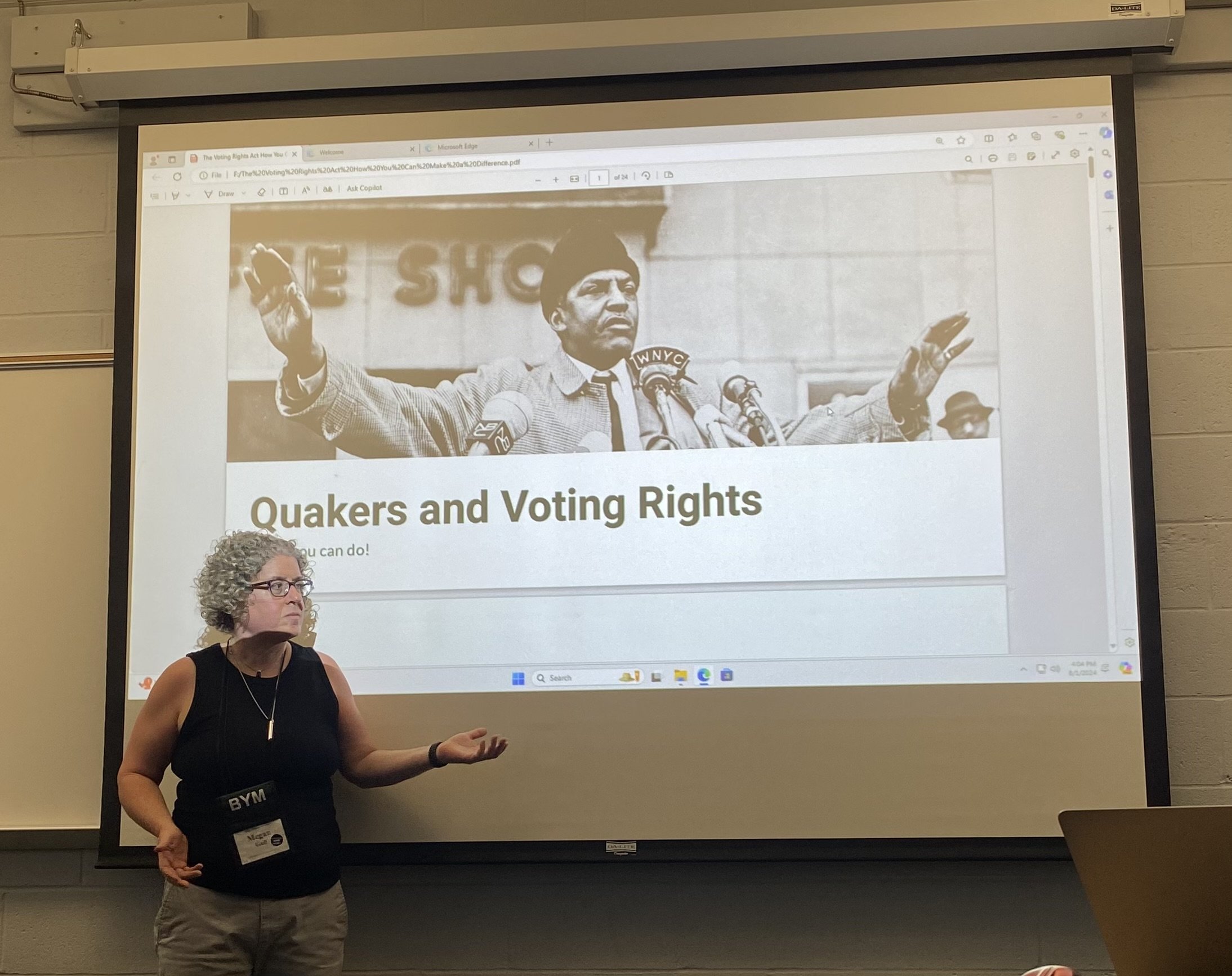a selecTION OF
lectures and trainings
voting behaviors in the indigenous community with jacqueline de leon and megan gall
For the george washington university law school’s multiracial democracy project
We share findings from data on the leading trends in Indigenous communities in recent U.S. elections, the legal context, and the systemic obstacles and barriers impacting communities.
August 2024
Quakers and voting rights: What you can do!
for the Baltimore yearly meeting
We were invited to do a non-partisan workshop educating Quakers on the Voting Rights Act and how to effectively engage in the upcoming election. We welcome invitations to come speak to your staff, congregation, or community group. Our approach is nonpartisan and aimed at community involvement in our democracy. You can contact us here.
April 2023
Training: “the art of outcomes: writing one that makes an impact” by heather foster and megan gall
For The Greater Kanawha Valley Foundation
Whether you are an expert or a beginner, you will walk away with at least a few new ideas for crafting compelling outcomes in your work. This training is for grant seekers who want to sharpen their skills when it comes to developing measurable outcome statements.
Oct. 2021
training: “california redistricting commission racially polarized voting training” by dr. megan gall
For the California Citizens Redistricting Commission (CRC)
Dr. Megan Gall, Principal at Blockwell Consulting, LLC, was retained as the statistical/racially polarized voting expert for the 2020 California Citizens Redistricting Commission for the Board of Equalization, Congress, State Senate, and State Assembly. We analyzed over 700 elections using ecological inference and other statistics to guide the CRC and legal team in creating legally valid districts for California. The training was to CRC members to prepare them for their duties in line drawing for all residents in California.
You can view the final enacted maps here. We are proud that California is one of the few states that was not mired in lawsuits after the 2020 redistricting cycle. You can read more about the 2020 CA CRC here in Dr. Christian Grose’s ‘Fair Maps in the State of California: The 2020 California Citizens Redistricting Commission’s Successes and Challenges’.
We’re currently working with folks at the California Statewide Database through UC Berkeley on several academic papers exploring additional data from the 2020 CA CRC.
August 8, 2017
Lecture: “Quantitative Anatomy of Section 2 Voting Rights Claim” by Dr. megan gall
For the Geometry of Redistricting: Summer School at Tufts University
In this lecture, I walk through the quantitative fundamentals of Section 2 voting rights case. First, I define redistricting, discuss the origins of redistricting criteria, and discuss requirements for redistricting from the US Constitution, ‘traditional redistricting principles’, and other state and local rules. Next, I talk about establishing legal intent and walk through the Gingles Preconditions outlined in Thornburg v. Gingles. Next, I define racially polarized voting (a.k.a. racial block voting) and explain the rigorous data requirements and statistical methods for evaluation which include homogenous precincts, ecological regression, ecological inference, and RxC ecological inference. I close with a brief conversation around the legal balancing act required in this work and a call for everyone to do their part by filling out US Census surveys.
July 2017
QGIS Introduction to Distance Analyses workshop by megan gall
For the Geometry of Redistricting Summer School at Tufts University
You can access these materials to learn how to conduct distance analyses in QGIS, the world’s leading free geospatial software. I provide the tutorial, spatial data, and QGIS project file. You’ll work through analyses for a real-world voting rights lawsuit called Poor Bear v. Jackson County brought by the Lawyers Committee for Civil Rights Under Law. The lawsuit was brought on behalf of members of the Oglala Sioux Tribe, and alleges that Jackson County, South Dakota’s refusal to open a satellite office for in-person absentee voting and registration on the Pine Ridge Reservation violates Section 2 of the Voting Rights Act of 1965 and the Fourteenth Amendment of the United States Constitution.
Tutorial goals: Jackson County had one voting site. Calculate the average travel distance for white and Native American voters to the single voting site to quantify the differences, if any, in group access. Also, calculate the average travel distance for both groups with a satellite voting site in the county to assess the impact of possible remedies.



